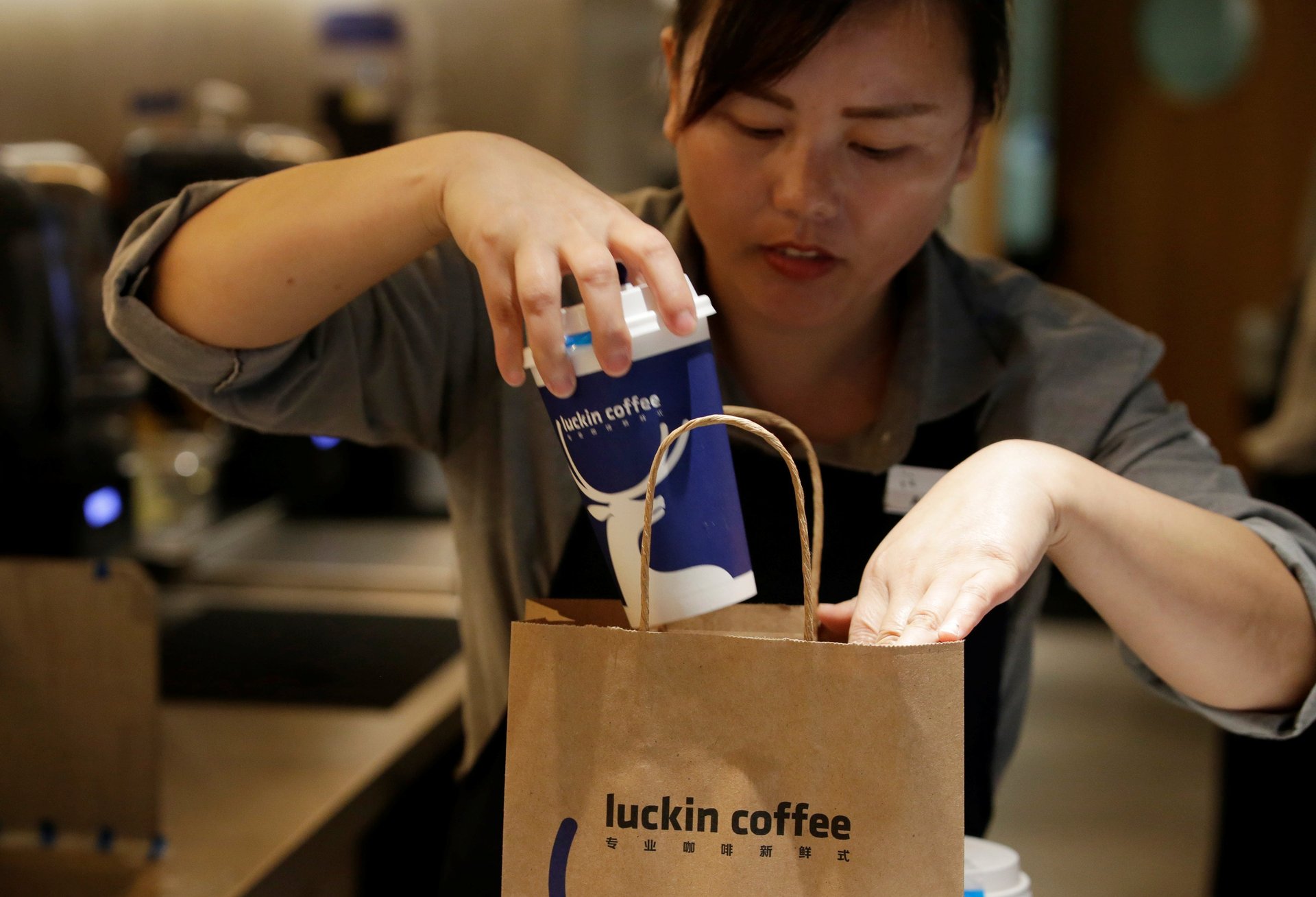To beat Starbucks, Luckin Coffee plans to open a store in China every 3.5 hours
Known endearingly in China as the Little Blue Cup, Luckin Coffee is no small fry.


Known endearingly in China as the Little Blue Cup, Luckin Coffee is no small fry.
The Beijing-based coffee upstart founded a year and a half ago has gone from operating nine stores at the end 2017 to 2,073 at the end of last year—a blistering rate of opening one store every four hours in 2018.
Fueled by caffeine, that speed is about to get even faster. The company said in January that it plans to have 4,500 stores in China by the end of this year, which comes to a relentless rate of one store every three-and-a-half hours. That would put it neck-and-neck with Starbucks, which said in its latest earnings (April 25), that it has 3,789 stores in China, and plans to add 600 more by the end of September this year.
It’s all part of Luckin’s plan to dislodge the world’s best-known coffee chain, Starbucks, to become the dominant coffee network in China. In its IPO application, filed this week to the US Securities and Exchange Commission, it wrote: “We aim to become the largest coffee network in China, in terms of number of stores, by the end of 2019.”
Seattle-based Starbucks, which controlled 80% of the coffee market in China in 2017, according to consultancy Euromonitor, has been betting big on the country that is now its second-largest market worldwide. It splurged $1.3 billion to buy the remaining 50% stake of its China operations in 2017—the single largest acquisition in company history. It reported yesterday that revenues in China increased 9% for January to March compared with a year earlier, but in a possible sign of the competition it’s facing, the number of same-store transactions declined compared with a year earlier. And while same-store sales have grown, the numbers are lukewarm when compared with growth in the same quarter a year earlier.
But its rate of store openings, while impressive in its own right, pales in comparison with Luckin. Last year, Starbucks opened a store every 16 hours, and plans to ramp that up to one store every 15 hours—about four times slower than Luckin.
Of course, Luckin is in its infancy while Starbucks has been in China since 1999, so it may not be entirely fair to directly compare their growth rates. But given that Starbucks is going all in on China and expects it to eventually become its largest market worldwide, both companies are locked in a fierce battle for market share.
While the rapid rise of Luckin has Starbucks sweating, competitive threats are also piling onto the Seattle-based coffeehouse giant from other fronts.
Having long laid claim to being the “third place” in China—the social space that’s neither home nor office—it now needs to compete with WeWork, which recently launched an on-demand service that allows users to rent desks by the minute while offering them free coffee. In essence, it’s an inversion of Starbucks’ model, which is to charge for coffee and offer a cushy space for free. Meanwhile, the growth of bookstores across China may eat into Starbucks’ third place niche, too.
Then there is Coca-Cola, which has entered the coffee market amid falling soda consumption in China by purchasing the British coffee chain Costa for $5.1 billion last year. Costa is making a push in China, targeting 1,200 stores by 2022.
Possibly as a sign of how much is at stake in China’s coffee wars, the country’s two rival tech giants are taking opposite corners of the ring. Last August, Starbucks teamed up with Alibaba on coffee delivery. Not to be outdone, Luckin announced a month later that it had teamed up with Tencent.
Meanwhile, the world’s largest investor, BlackRock, is betting on both coffee chains. It owns a nearly 7% stake in Starbucks, and plowed $125 million into Luckin’s latest funding round that valued the chain at almost $3 billion.
Evidently, BlackRock wants to sip from both mugs before deciding who has the better joe.